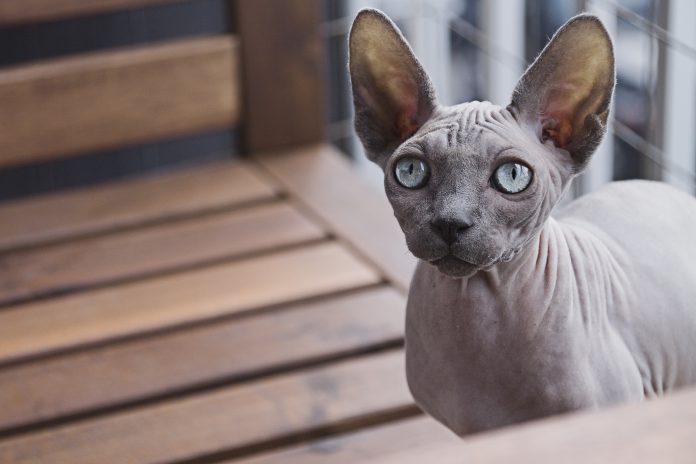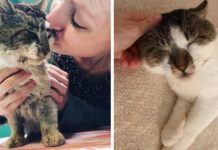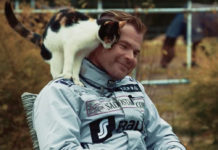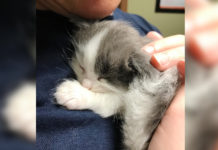This hairless breed is bursting with personality and loves attention. That’s probably quite a good thing because striking appearance of the sphynx cat will draw plenty of that. So there’s no fur, but what else do you need to know about this unique breed?
The Sphynx Cat In Brief
Its origins were entirely accidental, stemming from a genetic mutation which resulted in the birth of a hairless kitten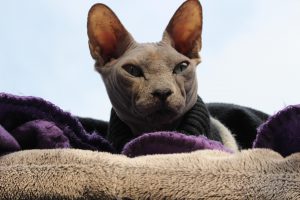 appropriately named Prune in Toronto in 1966. Prune’s mother was a regular black and white domestic cat named Elizabeth and when Prune was born his owner recognized the potential for a new breed and embarked on a breeding programme.
appropriately named Prune in Toronto in 1966. Prune’s mother was a regular black and white domestic cat named Elizabeth and when Prune was born his owner recognized the potential for a new breed and embarked on a breeding programme.
The gene that caused that first hairless specimen was recessive so other kittens were born with fur.
The Sphynx is so named after the enormous limestone statue called the sphinx in the Egyptian desert.
What’s the Temperament of a Sphynx Cat?
The Sphynx is a very sociable and affectionate breed that’s perfectly adapted to human company. They are fun-loving and calm-natured with a strong inquisitive streak. You can expect your sphynx to enthusiastically greet you as you come home from work.
They make good house cats but only when they have a companion to keep them company. Sphynx’s get on well with other cats and even dogs and love to get up to mischief with a partner in crime. They’re always ready to play and you should have a good supply of cat toys to keep them occuppied.
The Sphynx’s inquisitive nature can be entertaining but you’ll often find them inserting themselves into the middle of whatever you’re trying to do. Whether you’re cooking, cleaning or using a laptop your Sphynx will make sure you know they’re around.
They’re particularly food-orientated and will seek out and steal food so it’s not a good idea to leave any lying around untended. This characteristic develops early on and you’ll often see Sphynx kittens eating from mum’s bowl after only a few weeks.
These are incredibly tactile cats that absolutely love to be held and stroked. They greet strangers with enthusiasm and will happily jump into the lap of someone on first meeting. Their desire for contact is probably partly due to their lack of fur which makes a warm human a very attractive target.
A Quick Look at the Sphynx Cat in Action
We’ve mentioned that the Sphynx cat is full of personality and the little guy in this video is a great example.
Health
While sphynx are generally considered to be a healthy breed there are increased cases of certain diseases that could be down to genetic abnormalities. Sphynx are known to suffer from uriticaria pigmentosa, a disease of the skin that results in sores covering the body. They can also suffer from hypertropic cardiomyopathy which is a heart condition that can be inherited in certain breeds, although it isn’t thought to be inherited in Sphynx.
Care
Sphynx may be pretty much hairless, but that doesn’t mean they don’t require grooming. It’s a good idea to moisturize the skin with a moisturizing lotion or oil. Sphynx require regular bathing and a weekly bath should be enough to keep him in good health.
A gentle, scent-free shampoo will help to keep the skin clean and moisturized. Dry your sphynx thoroughly, paying close attention to the folds in the skin. I think it’s fair to say that most cats don’t enjoy being bathed. However, they can become accustomed to it if introduced as a kitten.
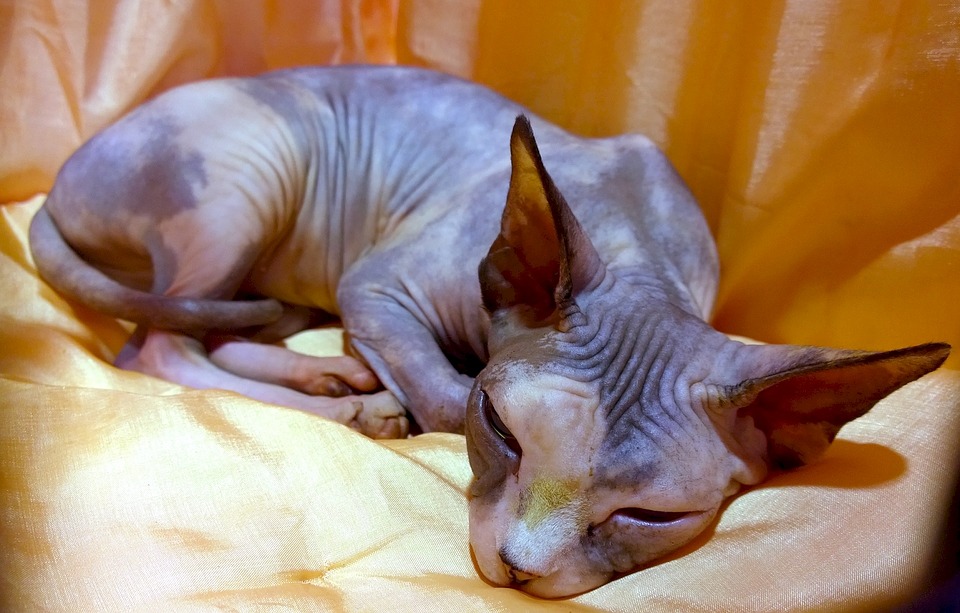 You should consider brushing the teeth periodically in order to avoid periodontal disease. A daily oral hygiene routine would obviously be best but you should do it as often as you can manage (and as often as your cat will tolerate).
You should consider brushing the teeth periodically in order to avoid periodontal disease. A daily oral hygiene routine would obviously be best but you should do it as often as you can manage (and as often as your cat will tolerate).
In regular cats eye discharge is carried off on the follicles surrounding the eyes. However, with a sphynx you’ll need to wipe around each eye, perhaps daily and preferably with a separate damp cloth for each eye to avoid cross-contamination.
It’s a similar story with the ears, where hairs will often prevent the build up of dirt. You should therefore check your sphynx’s ears on a weekly or two weekly cycle. A gentle, damp cloth is best and you should never use cotton buds or swabs as it’s very easy to cause damage to the cat’s ear.
You might think your sphynx feels warm when you hold him but this can be quite deceptive. They lack the insulating layer of fur found on other breeds and there are times when he will need an added layer. You can guarantee that if you’re feeling it a bit chilly then so is your sphynx. It’s a good idea to buy a snug fitting cat jacket or sweater.
While it’s recommended that sphynx’s be kept as indoor cats it’s inevitable that some owners allow their pet outside. This comes with some risks and you should do your best to mitigate them. Also, in hot sunny weather you should apply a high factor sunscreen to protect your cat’s delicate skin from sunburn.
Physiology
More often than not the Sphynx is completely hairless or covered in a fine, soft down-like layer that feels not unlike suede. Consequently, physiological features that are often hidden in other breeds seem more prominent in the sphynx. This little looks like he has a bit of a gut on him but that’s normal. The sphynx shouldn’t be fat and will generally have a strong and muscular appearance
Although the sphynx is wrinkly from birth it shouldn’t be to the detriment of the cat. Wrinkles should never impact the cat’s ability to breathe or see properly. Please bear in mind that sphynx kittens look super-wrinkly. However these generally smooth out a little as the cat reaches maturity.
The sphynx’s head is wedge-like, long and slightly pointed with huge eyes and ears that give it an intelligent expression. You won’t find yourself picking up whiskers around the house as the sphynx tends not to have any. Brow whiskers are also pretty uncommon.

